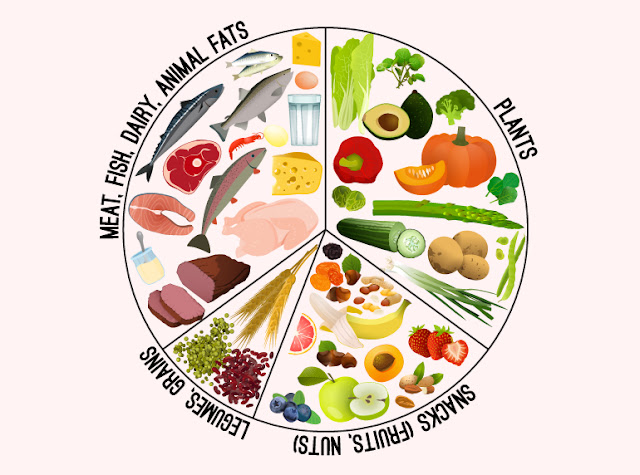Best Diet Chart for Weight Loss
Patients

You may be tempted to crash diet and do extreme exercise to shed a few
extra kilos. But losing weight in this way is not a healthy strategy Also; some
people may not even see any change in inches in the long term. As a result,
they may lose motivation in a short time. Technically, many things go hand in
hand when it comes to burning fat. This article provides an easy-to-follow
basic diet plan for weight reduction while highlighting several components of
weight loss Moreover; you will also get useful tips to enhance your weight loss
journey.
Factors that affect weight loss
A balanced diet and frequent exercise are essential for weight loss and
weight maintenance. Sleep is just as vital. A few of the variables influencing
weight reduction are listed below.
Diet: Consuming a nutritious, well-balanced diet high in protein and
fiber and low in calories and saturated fat will help with weight loss.
Exercise: A weight loss regimen must include regular physical exercise.
Selecting enjoyable activities that mesh well with your lifestyle can make it
simpler for you to maintain motivation.
Stress: Under stressful circumstances, emotional eating and overeating
can occur, which can result in weight gain. Long-term benefits can be obtained
from learning stress-reduction techniques like yoga and deep breathing.
Sleep: Sleep deprivation has been linked to hormone imbalances that
affect appetite and fullness. The hormone ghrelin is also elevated in
sleep-deprived individuals, which may contribute to increased desires and
hunger.
Medication: Some drugs, such as antidepressants, may also have an
impact on your efforts to lose weight. To lower your chance of gaining weight,
discuss with your doctor any alternatives to the drugs you already use.
Genetics: Both weight growth and decrease may be influenced by
genetics. You can be more prone to gain weight if you have an overweight family
member.
Age: Getting older may contribute to weight gain. People's metabolisms
slow down and their bodies become less effective at burning calories as they
become older.
Hormone imbalances might have an impact on the body's ability to retain
and use
Myths and Misconceptions about Weight Loss Diets
Myth 1: You must eliminate all carbohydrates
Factual statement: A balanced diet must include carbohydrates.
2. Myth: Fad diets promise immediate and long-lasting effects.
Fact: Temporary weight reduction is a common result of fad diets.
3. Myth: You may lose weight by skipping meals.
Fact: Missing meals might cause your metabolism to slow down and cause
you to overeat in the afternoon.
4. Myth: A balanced diet cannot be replaced by supplements.
Fact: A healthy diet should be the foundation of any supplement use.
7-day diet chart for weight loss patients for Indians
Here's a step-by-step diet chart
adults (without serious health conditions) can consider to lose a few inches.
Please note that this is a general plan and always consult your doctor before
making any changes to your diet.
Day 1
Breakfast: Whole wheat Poha,
steamed sprouts, some nuts, and an apple
Lunch: Vegetable soup, brown
rice, lentils, and a dry vegetable.
Snack: 1-2 fruits and roasted gram
Dinner: One egg omelet, a small
portion of salad, and vegetable puma
Day 2:
Breakfast
A glass of warm milk and Dalia or
piranha for breakfast
Lunch consists of one bowl of
yogurt, a dry vegetable, and ragi or quinoa puma.
Snack: An apple, boiling peanuts,
and roasted china
Dinner consists of two egg
whites, cooked veggies with curd, and vegetable pula.
Day 3:
Breakfast
Oatmeal porridge, or Poha, and a warm milk
glass for breakfast
Lunch consists of a dry
vegetable, curd, and vegetable biryani.
Snack: Salad and baked or boiled
potatoes
Dinner is mixed vegetables and
vegetable Dalia.
Day 4:
Breakfast
Whole wheat chapatis and curd for
breakfast
Lunch consists of vegetables,
dal, and brown rice.
Snack: A few of fruits and
roasted china
Dinner consists of a dish of
yogurt and veggies with peanut sauce.
Day 5:
Breakfast
Warm milk and chapatis cooked
with wheat and lower flour for breakfast
Lunch consists of chapatis, mixed
vegetables, and vegetable soup.
Snack: An apple, some almonds,
and roasted china
Dinner consists of one chapatis,
a dry vegetable, and veggie pula.
Day 6:
Breakfast
Two to three multigrain chapattis
and a warm milk glass for breakfast
Lunch consists of curd, dal,
vegetable pula, and a dry vegetable.
Snack: A few of fruits and
roasted china
Dinner is Sāmbhar and vegetable uttapam.
Day 7:
Breakfast
Idle, ragi dosa, and warm milk in a glass for
breakfast
Lunch consists of a dry
vegetable, curd, and vegetable biryani.
Snack: A salad paired with baked
or boiled potatoes
Dinner is some veggies and masala
oats.






0 Comments